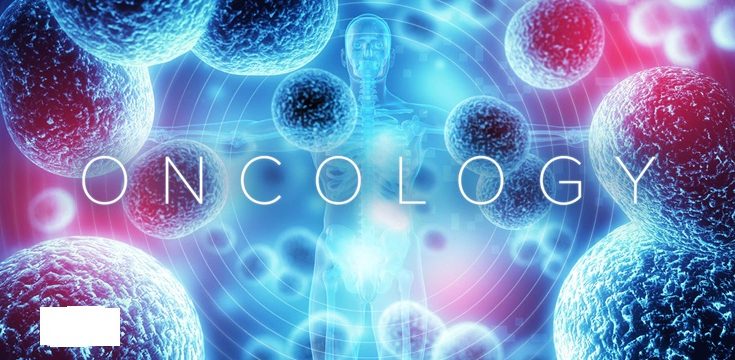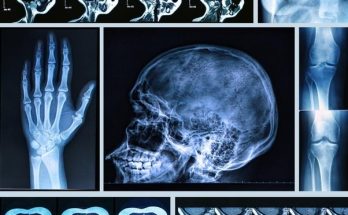The Nature of Cancer: Cell Growth, Differentiation, and Carcinogenesis
1. Introduction
Cancer is a group of diseases characterized by abnormal and uncontrolled cell growth. It can arise in virtually any tissue and has the ability to invade surrounding tissues and spread (metastasize) to distant organs. Unlike normal cells, which grow, divide, and die in a regulated manner, cancer cells bypass growth controls and proliferate indefinitely.
Understanding cancer requires knowledge of:
- How normal cells grow and differentiate
- The mechanisms that regulate cell division
- The mutations and environmental factors that drive carcinogenesis
Advancements in molecular biology and genetics have provided insights into cancer’s nature, leading to targeted therapies that aim to disrupt these pathways.
2. Cell Growth and Differentiation
2.1 Normal Cell Growth
In healthy tissues, cells grow and divide in a controlled manner through the cell cycle. The cycle consists of several phases:
- G1 Phase (Growth 1): The cell grows, synthesizes proteins, and prepares for DNA replication.
- S Phase (Synthesis): DNA is replicated, ensuring that each daughter cell receives an identical copy.
- G2 Phase (Growth 2): The cell checks for DNA errors and prepares for division.
- M Phase (Mitosis): The cell divides into two genetically identical daughter cells.
- G0 Phase (Resting Phase): Some cells exit the cycle temporarily or permanently (e.g., nerve and muscle cells).
📌 Key Regulators of Cell Growth:
- Cyclins and Cyclin-Dependent Kinases (CDKs): Ensure orderly progression through the cell cycle.
- Tumor Suppressor Genes (e.g., p53, RB): Act as “brakes” to prevent uncontrolled growth.
- Proto-Oncogenes (e.g., MYC, RAS): Promote normal cell division but become oncogenes when mutated.
2.2 Cell Differentiation
Cell differentiation is the process by which unspecialized cells become specialized for specific functions (e.g., neurons, muscle cells, blood cells).
- Highly differentiated cells: Functionally mature with specialized roles (e.g., neurons, muscle cells).
- Poorly differentiated cells: Retain features of immature cells and may divide uncontrollably (e.g., cancer cells).
Cancer cells often show loss of differentiation, a process called anaplasia, meaning they revert to a more primitive, undifferentiated state. The degree of differentiation determines how aggressive a tumor is:
- Well-differentiated tumors resemble normal tissue and grow slowly.
- Poorly differentiated tumors look abnormal and grow aggressively.
Normal vs. Cancer Cell Growth
(Depicts organized, structured growth vs. chaotic, disordered cancerous growth.)
3. Carcinogenesis: The Process of Cancer Development
3.1 Definition of Carcinogenesis
Carcinogenesis is the process by which normal cells undergo genetic changes that transform them into cancer cells. This is a multistep process involving DNA mutations, epigenetic changes, and environmental exposures.
3.2 The Three Stages of Carcinogenesis
1. Initiation (Genetic Mutation Stage)
- Mutations occur in key genes (oncogenes, tumor suppressor genes, DNA repair genes).
- Can be caused by carcinogens (chemicals, radiation, viruses).
- If DNA repair mechanisms fail, mutations become permanent.
2. Promotion (Clonal Expansion Stage)
- Mutated cells start dividing uncontrollably.
- Growth signals (e.g., hormones, inflammation) fuel abnormal cell proliferation.
- Unlike initiation, this stage is reversible if the stimulus is removed.
3. Progression (Malignant Transformation)
- Cells acquire additional mutations, becoming increasingly aggressive.
- Tumors develop their own blood supply (angiogenesis) to sustain growth.
- Cancer cells invade nearby tissues and enter the bloodstream or lymphatic system to spread (metastasis).
The Three Stages of Carcinogenesis
(Shows how a normal cell progresses to a fully malignant cancer cell.)
4. Causes of Cancer (Carcinogens)
4.1 Genetic Factors
- Oncogene Activation: MYC, RAS, HER2 mutations lead to uncontrolled growth.
- Tumor Suppressor Gene Inactivation: Loss of p53 or RB removes cell cycle “brakes.”
- Defective DNA Repair Mechanisms: BRCA1/BRCA2 mutations increase cancer risk.
4.2 Environmental and Lifestyle Factors
- Chemical Carcinogens: Tobacco, asbestos, benzene, aflatoxins.
- Radiation: UV radiation (skin cancer), ionizing radiation (leukemia, thyroid cancer).
- Infections:
- HPV → Cervical cancer
- Hepatitis B/C → Liver cancer
- Epstein-Barr virus → Lymphoma
- Diet & Lifestyle: High-fat diets, obesity, excessive alcohol consumption.
📌 Prevention Strategies:
✔️ Avoid smoking and alcohol.
✔️ Eat a balanced diet rich in antioxidants.
✔️ Get vaccinated against HPV and Hepatitis B.
✔️ Regular screenings (e.g., mammograms, colonoscopies).
Common Carcinogens and Their Effects
(Shows different carcinogens and their associated cancers.)
5. Hallmarks of Cancer (Hanahan & Weinberg, 2011)
Cancer cells exhibit six major hallmarks:
- Sustaining Proliferative Signaling – Constantly active growth signals.
- Evading Growth Suppressors – Loss of tumor suppressor function.
- Resisting Cell Death (Apoptosis Avoidance) – Failure of programmed cell death.
- Enabling Replicative Immortality – Activation of telomerase to extend lifespan.
- Inducing Angiogenesis – Formation of new blood vessels for tumor survival.
- Activating Invasion & Metastasis – Spread to distant organs.
Hallmarks of Cancer
(A diagram summarizing the six hallmarks.)
6. Metastasis: How Cancer Spreads
Steps in Metastasis:
- Tumor cells break away from the primary site.
- They invade blood vessels or lymphatic channels.
- Survive in circulation by evading immune destruction.
- Attach to new tissues and grow in distant organs.
Common Sites of Metastasis:
- Lung Cancer → Brain, Bones, Liver
- Breast Cancer → Bones, Liver, Lungs, Brain
- Prostate Cancer → Bones
- Colon Cancer → Liver
Cancer Metastasis Pathway
(Depicts how cancer spreads through the body.)
7. Conclusion
Cancer is a complex, multifactorial disease arising from genetic mutations, environmental factors, and cellular dysregulation. The study of cancer’s nature—its growth, differentiation, and progression—has led to breakthroughs in prevention, early detection, and targeted therapies.
With continued research, personalized medicine, immunotherapy, and gene-targeted treatments offer hope for better cancer control and patient survival.



